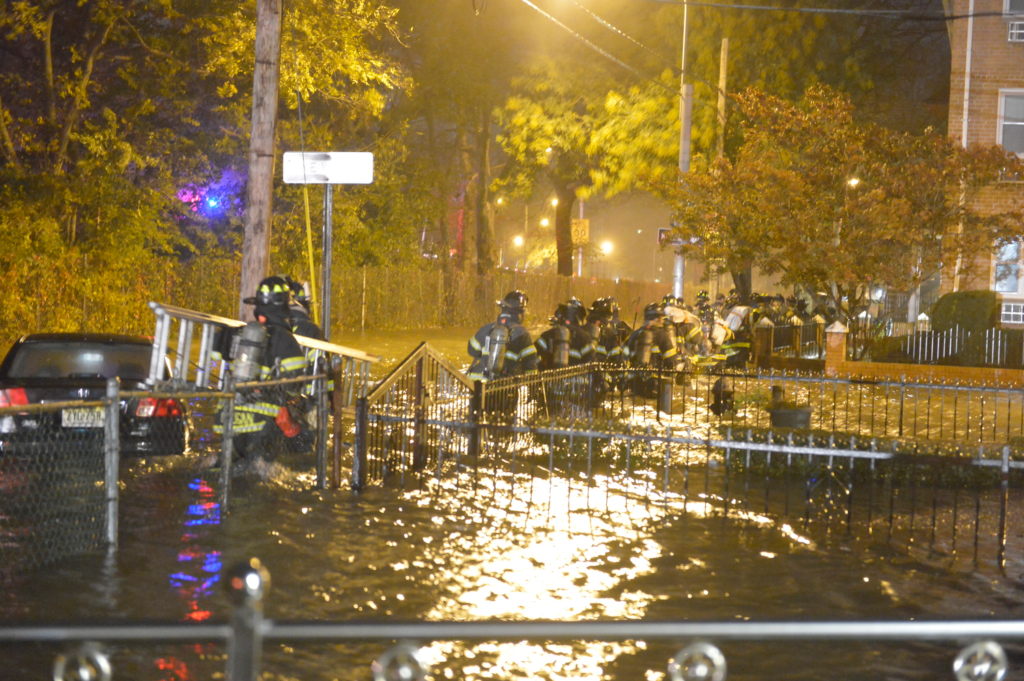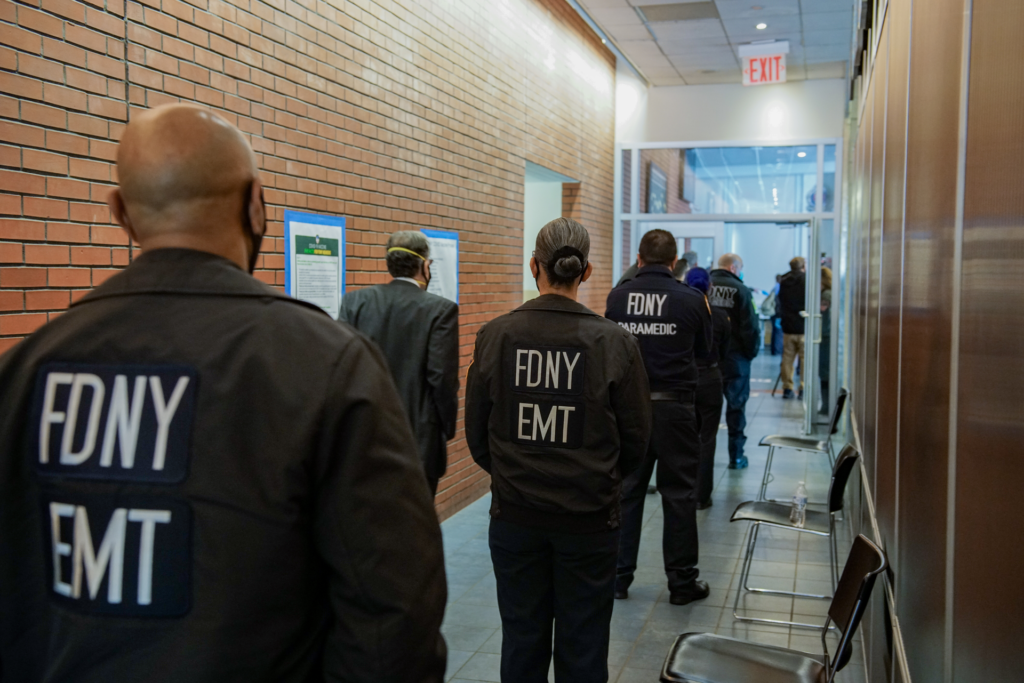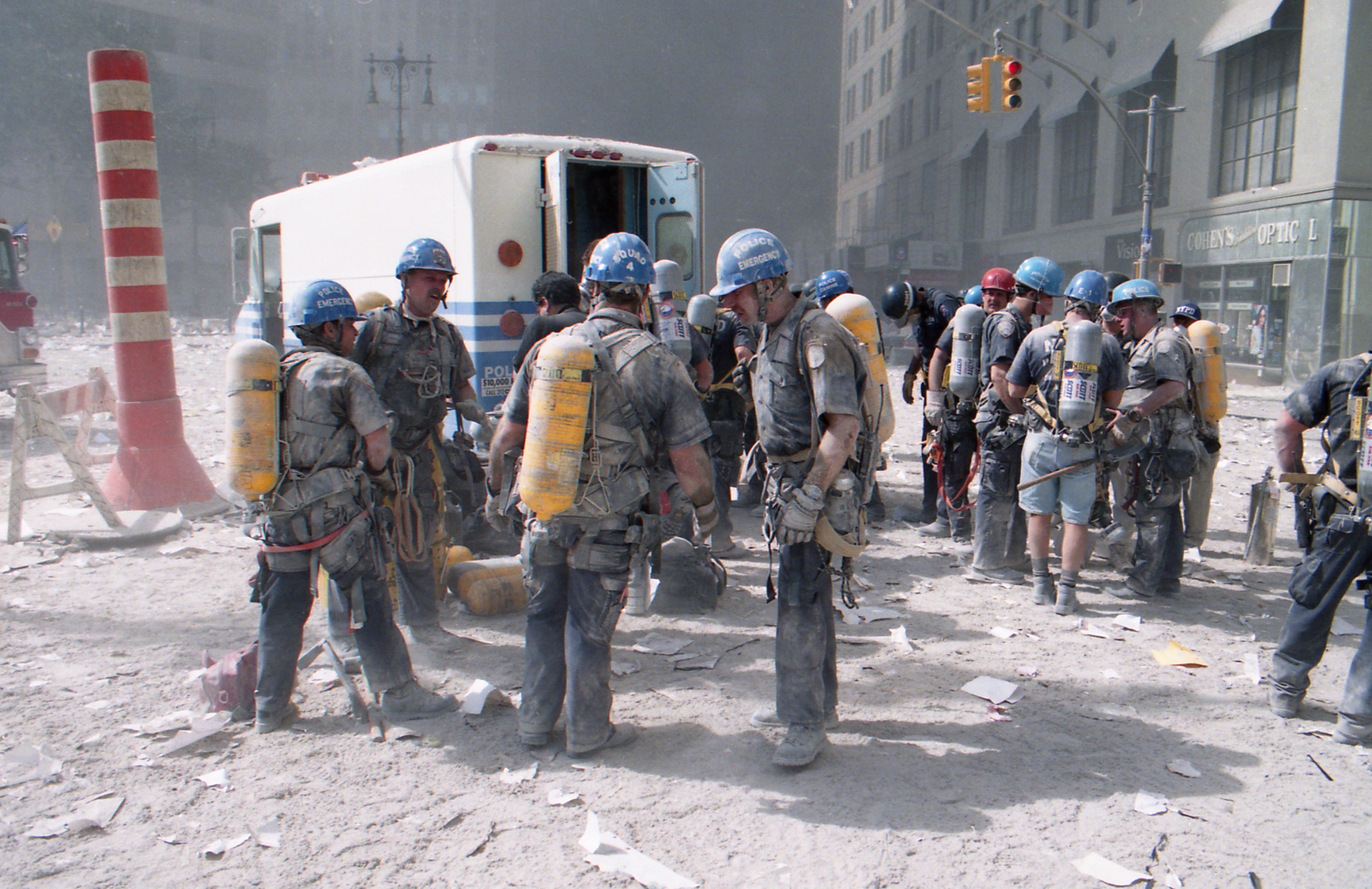The Father’s Day Fire, 9/11, Superstorm Sandy and COVID-19 triggered evolutions to the FDNY in ways expected and otherwise.
September 11, 2021 – Thomas Richardson – Firehouse.com
The FDNY’s 20-year journey since Sept. 11, 2001, has been challenging and emotional—and the impetus for self-reflection as an organization.
Father’s Day, June 17, 2001
The FDNY responds to approximately 4,000 medical emergencies and 1,500 fires and other emergencies every day. On a typical day in New York City, we might have as many as a dozen working structural fires. Father’s Day 2001 was no different, except for the fact that we experienced a tragic fire in a commercial building and lost Firefighter John Downing, Firefighter Brian Fahey and Firefighter Harry Ford, when a massive explosion occurred about 30 minutes into the operation at the building.
Why do I begin by mentioning this fire? The members who were on scene that day were faced with a chaotic, emotional situation yet continued to operate to recover our brother firefighters. This started the process of making some needed change within our department as well as in the fire and building codes in New York City (NYC). We learned much and persevered moving forward.
September 11, 2001
On September 11, 2,977 souls were murdered by 19 hijackers, inclusive of the World Trade Center, the Pentagon and the site at Shanksville, PA.
The FDNY is a large and robust organization that’s capable of responding to and handling just about any emergency. Admittedly, we were humbled on 9/11. We needed assistance. We lost several of our senior leaders, including our Chief of Department Peter Ganci Jr. With several hundred members missing and two 110-story buildings completely collapsed and still burning, we needed to quickly adapt, improvise and overcome. I can say proudly that we were able to do that but with a lot of assistance. We are rather good at incident command for most fires and emergencies, but for an event that was as large and as complex as 9/11, we needed to learn from others.
Early on, an incident management team (IMT) from the state of Alaska came to assist to establish and organize a solid framework for command moving forward for several months. We learned what an IMT is and how valuable a formalized expanded incident command system structure would be. We were introduced to the incident action plan concept for long-term events. We learned how really important a unified command structure is and of the value of building relationships with other agencies and partners.
The FDNY hired the consulting firm McKinsey & Company to study our response to 9/11. The firm produced a report that focused on how to increase the FDNY’s preparedness moving forward. Key recommendations that were in the report included: significantly improve our communications infrastructure and radio systems; develop technology to instantly account for members who operate on scene of fires and emergencies; build an automatic recall capability to enable the department to quickly bring in off-duty members when faced with a complex, long-duration incident; and develop a state-of-the-art Fire Department Operations Center (FDOC) to be a central node for situational awareness and reporting to senior leaders and field commanders.
One of the most rewarding relationships that resulted from the 9/11 attacks is the partnership with all of the branches of the military. The military has played a large role in the FDNY’s professional development and leadership programs. This relationship continues to evolve and is stronger than ever.
Superstorm Sandy
Superstorm Sandy hit the NYC tri-state area on Oct. 29, 2012. We experienced what essentially was a conflagration in the southernmost part of the city. NYC had 43 fatalities. Sixty-five hundred patients had to be evacuated from certain hospitals and nursing homes; 90,000 buildings were in the inundation zone; 2 million New Yorkers were without power; numerous major transit hubs flooded.
Eleven years after 9/11, little did we know that much of what we learned from 9/11 would be the foundation for future major emergency responses.
If that wasn’t enough, a strong nor’easter hit the east coast nine days later.
Many of our members were severely affected, losing their home and belongings. A fire lieutenant who lived in South Queens in Rockaway would receive the highest medal of valor that we award. He and his teenage son donned wetsuits and, using surfboards, rescued 25 people as houses were engulfed by fire.

Much of the planning that was done to prepare for major storms would come to fruition. We were able to sustain continuity of operations even amid the circumstance whereby many of our firehouses and EMS stations were being flooded.
Once again, the FDNY learned and adapted its capabilities. We truly understood the benefit of decentralizing command. Headquarters served as an area command, and our five borough commanders that were closest to the boots on the ground managed their resources to accomplish the mission.
We expanded our swiftwater capabilities within our Special Operations Command. We added high-axle vehicles. Several units that are located in flood zones received training in the use of flat-bottomed boats to access flooded areas.
Prior to Superstorm Sandy, the IMT only operated outside of the city at other major events around the country. Sandy was the IMT’s first major deployment within NYC, and it performed several different missions admirably.
COVID-19 Pandemic
The first pandemic memo that we in the FDNY published to our members was on Jan. 28, 2020. It basically gave a brief synopsis of what was happening in Wuhan, China, and that we would need to prepare for those who were traveling from that region.
The first case of COVID-19 in NYC was reported on March 1, 2020. The FDNY had two major concerns: Do we have enough PPE and how will our workforce be affected? Will we be able to maintain continuity of operations if a large part of our workforce becomes sick?
FDNY Chief of Department John Sudnik requested that our Center for Terrorism and Disaster Preparedness prepare an executive-level tabletop exercise to play out the scenario. This occurred on March 10, 2020. As the case load in the city started to mount and more of our members became sick, we adapted by changing the work schedules of firefighters, EMTs and paramedics to maintain adequate staffing levels. FDNY Chief Medical Officer Dr. David Prezant was our guiding force when it came to appropriate levels of PPE and on what members should wear to protect themselves. The IMT was put in charge of managing our PPE inventories. Our Management, Analysis and Planning Unit (MAP) was tasked with creating electronic dashboards for senior executives to use to manage staffing, PPE, unit activity, medical leave rates and other metrics.

At the height of the pandemic in the spring of 2020, specifically early April, our Bureau of EMS had a day with 6,500 medical responses (on a normal day, it does 4,000). In NYC, we average about 60–70 cardiac arrest calls each day; during this time, we saw 250–300 per day. Our members saw a lot of death. We have a young workforce, particularly in our Bureau of EMS. This no doubt had a significant effect on our members. In fact, regretfully, we had a couple of suicides. Our Counseling Service Unit, which in my opinion is the best in the business, was overwhelmed by the situation.
We modified responses to medical calls for our fire units to try to preserve the workforce. This was a priority strategy for us. Our medical leave rate normally is about 7 percent on any given day. At the height of the pandemic, we were close to 20 percent. To date, we have had more than 7,000 members contract COVID and take medical leave at some point. This represents about 50 percent of our fire and EMS workforce. Sadly, 15 of the FDNY—six uniformed members (one firefighter, five EMS) and nine civilian support staff employees—lost their life because of COVID. We also remember Paramedic Paul Carey from Colorado Springs, who answered our call for help from outside of NYC, who passed away because he contracted COVID.
Remarkably, no FDNY frontline responder who works on an ambulance or in a fire company died from COVID.
Even with the staffing and schedule modifications, our members worked a lot, and we knew that this wasn’t a healthy recipe, but we knew that we had to continue to perform our mission.
So, what did we learn? We know we didn’t get everything right.
We had an existing Pandemic Response Plan that was very detailed. As we evolved throughout this pandemic, we dusted off the plan and revised it. This was done methodically, with the guidance of our medical professionals. We used data extensively. We constantly reminded ourselves that we had a mission and had to continue to meet that mission.
Our relationship with the labor unions was a key factor in being able to make changes on the fly to sustain staffing and service. I certainly won’t say that we didn’t experience bumps in the road, but the FDNY and the unions were able to work together for the greater good.
Arguably, the key to making it through the pandemic was communication. It had to be timely, it had to be accurate, and, most importantly, it had to be transparent. Our members essentially were bombarded with information every day, sometimes several times a day. In fact, we finally decided that all messages would be transmitted at the same time each day because of the volume of information and guidance that we put out. The unions’ use of their platforms to message the membership was helpful. Our IMT Public Information Officer function was invaluable, helping us to draft regular updates to be disseminated to the field.
Technology became a very important tool in communicating with the field. As Chief of Operations at the time, I was able to use a Webex platform to communicate in real time to the on-duty field units with important information and, very importantly, my leader’s intent. As senior executives, we often are accused of not being in touch with the boots on the ground. We wanted the troops to know how much we cared about them and that all of us who were working in headquarters were committed to making sure that they had what they needed to do their job and that they were being heard.
One of the things that I felt was most helpful was when we deployed our senior executives to visit firehouses and EMS stations to personally visit with the troops—taking questions and hearing the members’ concerns. The most frequent concerns that were expressed by the members, particularly at the height of the pandemic, were the lack of available COVID testing and the worry about members bringing the virus home to their family. We eventually were able to provide testing capability, and NYC did institute a hotel program for members.
One of the best definitions of resilience is “the process of adapting well in the face of adversity, trauma, tragedy, threats or significant sources of stress.” I would argue that the fire and EMS service along with the health care profession took resilience to another level.
Moving forward
Responding to and managing major crises is challenging, emotional and absolutely stressful. In my humble opinion, we need a set of guiding principles to be successful. We can’t always predict the outcomes, but we certainly can affect process.
An article from Homeland Security Affairs: The Journal of the NPS Center for Homeland Defense and Security, which is titled “The Case for Adaptive SOPs in Complex Crises and Unpredictable Operating Environments,” puts forth an argument that, “Today’s emergency response paradigm must evolve, acclimating to the unpredictable nature of complex crisis environments.” The article explores what the authors call the “disaster dilemma” of applying predictive SOPs to unpredictable, complex disasters. They argue that we must include critical thinking and adaptability into crisis response.
These claims definitely can assist our organizations in beginning to discuss how to prepare for these events that we call, generally, crises or disasters.
In conclusion, I present to you the triangle, which is the strongest of geometric shapes. If one side fails, the triangle collapses. We all know that a strong foundation is critical. Throughout these past 20 years, I believe that our foundation has remained strong and maybe even became stronger as a first responder community. Along the way, we have developed relationships and networks that provide support at all levels—organizationally, strategically and tactically.
With a strong foundation, a willingness to self-reflect and understanding of our guiding principles as individuals and as organizations, we can sustain a focus on our mission to serve.
Guiding Principles
Preparedness: Sounds easy, but it isn’t. It requires commitment, not only individually, but collectively as an organization. It starts at the top. An organization that’s committed to being prepared must get buy-in from the troops. It’s a daily routine of being prepared, not only for the major incident. If we have a preparedness mindset, it’s easier to be ready when disaster strikes.
Trust: Everything that we do in this business is about trust—trust in oneself and trust in one another. If we don’t have trust, we don’t have relationships. Without relationships, we can’t accomplish the mission.
Respect: Respect for others, respect for differing opinions and views. Very simply, if we treat people with respect, they might be more willing to listen to our ideas. Organizationally, we must have the utmost respect for our workforce, for without them we don’t exist.
Teamwork: As all of you know, there is no “i” in team. To be a cohesive team, we must have mutual respect and trust in one another. The very essence of the work that we do is incumbent on the success of the team. This should be preached by leadership constantly.
Moral Imperative: When we all raised our right hands to be first responders, we should have understood the moral imperative that we are expected to adhere to. We have a duty to act, a duty to respond, and a duty to be prepared to the best of our ability. This can’t be taken lightly. I believe this is a key principle in our business.
